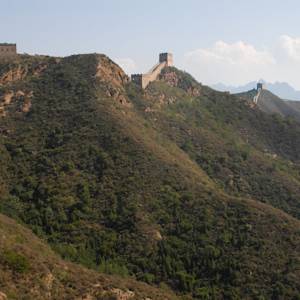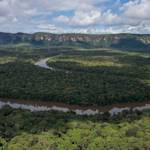Conservation agriculture in Tunisia
1999 CE • El Krib, Northern Tunisia
"Adnen Abdrabbou’s land in the El Krib region of northern Tunisia is semi-arid . . . finding enough water for irrigation has always posed a challenge . . . In 1999, Abdrabbou parted ways with traditional farming systems. Conventional – and intensive – tillage caused soil erosion; and ammonium nitrate and phosphorus fertilizers were too expensive. He began practicing conservation agriculture instead... minimum tillage, permanent soil cover, and diverse crop rotation . . . just seven years into partially adopting the techniques of conservation agriculture . . . there were improvements in fertility and water retention in the soil. The yields were higher, too. That year, Abdrabbou bought his first no-till seeder. And he became involved in establishing the Sustainable Agriculture Association - known by its French acronym “APAD” – to disseminate the technology. Today, all 140 hectares of his land are under conservation agriculture. He grows five or six crops for diverse crop rotation: his cereal crops are barley, wheat, and triticale; his legumes faba bean, alfalfa, and vetch. Growing forage is not only beneficial for crop rotation; it can also be used to feed small ruminants during the summer and winter periods when farmers are faced with a forage deficit . . . Conservation agriculture provides effective and natural solutions to conserve soil and water resources. Studies led by ICARDA and the Tunisian National Agricultural Research and Extension Systems (NARES) show that the elimination of tillage operations led to savings in fuel, time, and labor. Farmers used to believe that plowing soil and burning crop residues were the way to improve soil fertility and control pests. But as Abdrabbou learned, the opposite is true. Plowing makes the soil dry and sterile, especially in summer, when it is exposed to heat and light . . . “As farmers, we borrow the land for a short time, and we are responsible for taking care of it until we hand it over to our children and their children”"
International Center for Agricultural Research in the Dry Areas, “A Model Farmer Adopts Conservation Agriculture in North Africa - Tunisia,” reliefweb, September 3, 2019.
Image: Dennis Jarvis via Flickr, Attribution-ShareAlike 2.0 Generic (CC BY-SA 2.0)


Learn about Maya Lin’s fifth and final memorial: a multi-platform science based artwork that presents an ecological history of our world - past, present, and future.

Discover ecological histories and stories of former abundance, loss, and recovery on the map of memory.

Learn how we can reduce our emissions and protect and restore species and habitats – around the world.

See how art can help us rethink the problems we face, and give us hope that each one of us can make a difference.

Help make a global memorial something personal and close to home. Share your stories of the natural world.


